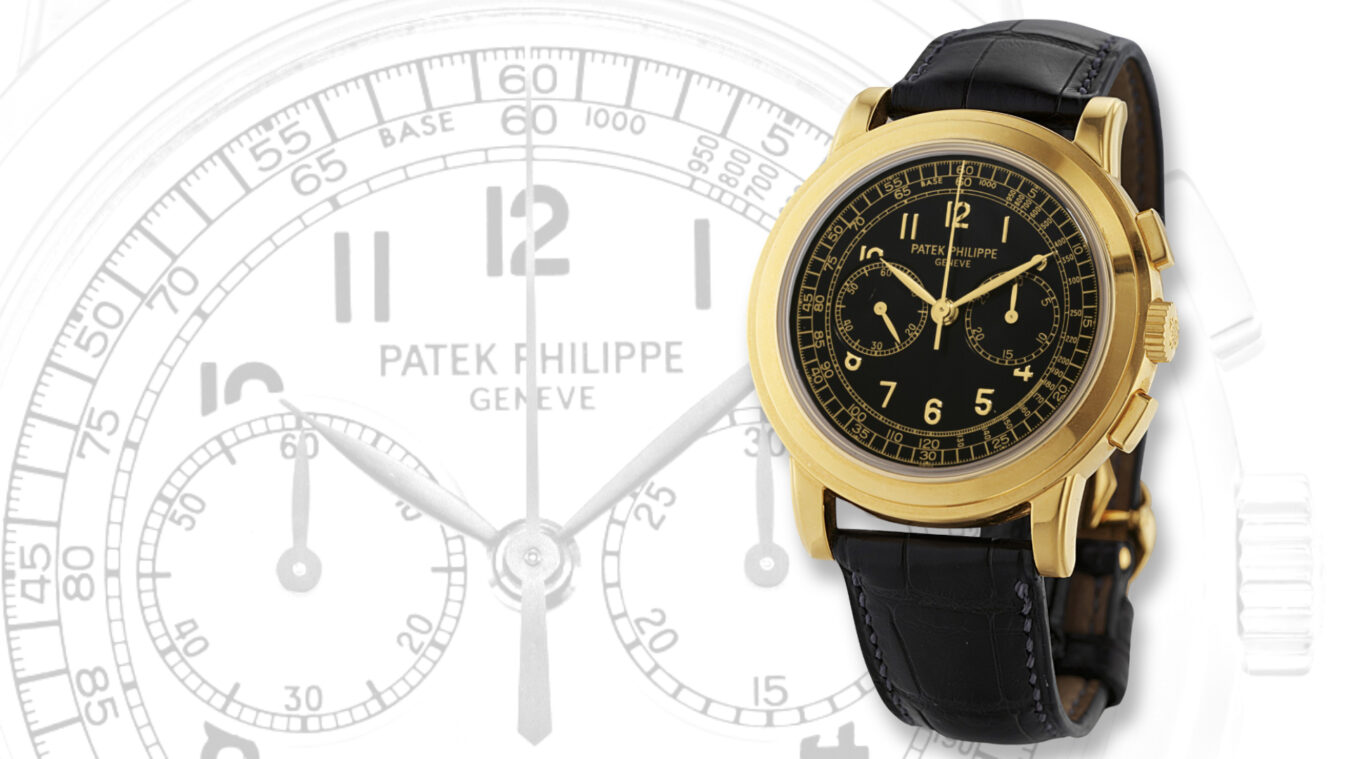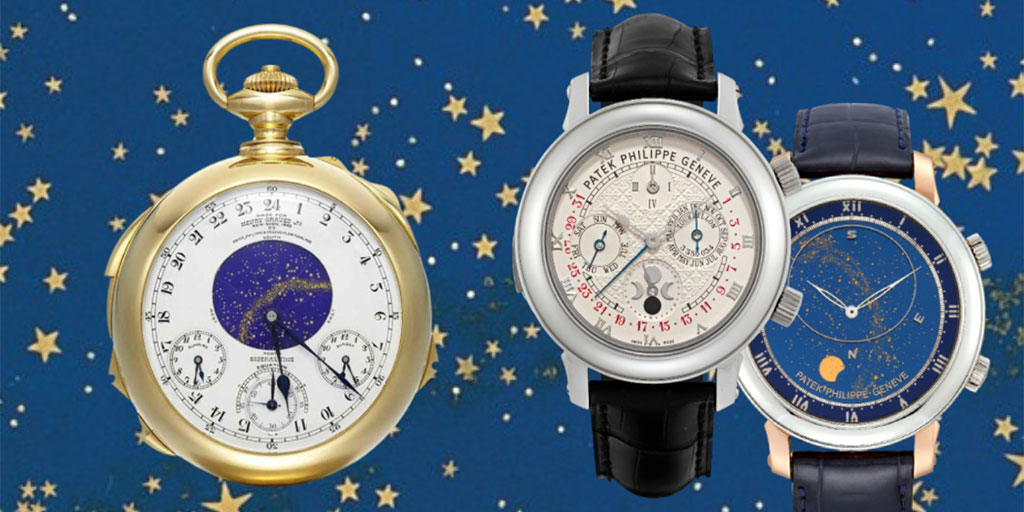Probably one of the most iconic watch designs of the past century is the Patek Philippe Calatrava. First introduced in 1932 with the ref. 96, its pure, simple design reflected the minimalist Bauhaus principle in which function determines the form of an object. This classic form has since inspired many hundreds of different variations, but all with the same DNA. One variation in the finish of the signature Calatrava design has become as much an icon as its birth mother: the Clous de Paris or hobnail bezel.
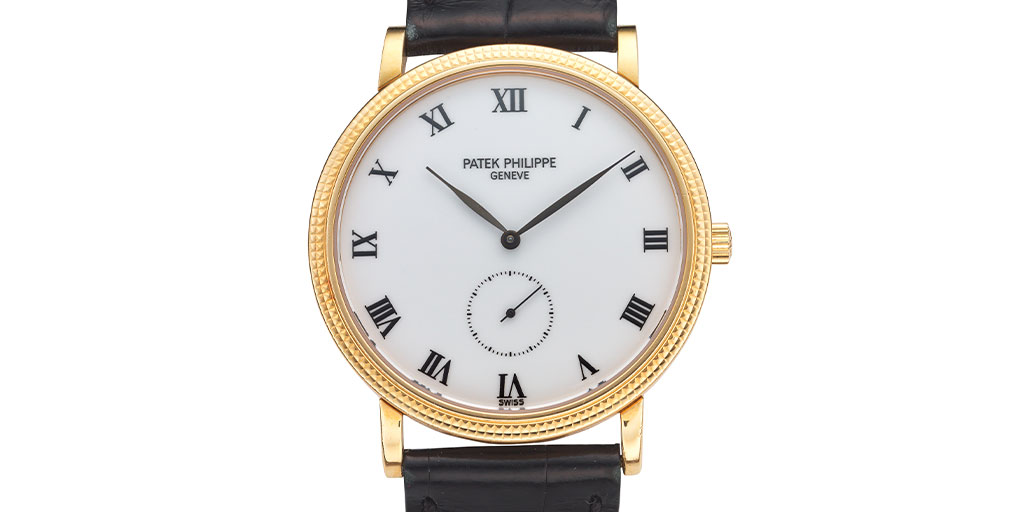
The hobnail bezel first decorated a Calatrava in 1934 with the ref. 96D (D for décor), but its iconic status was really sealed over fifty years later with the introduction of the now legendary ref. 3919 in 1985. The story behind the design of the ref. 3919 has become something of a legend itself which we will discuss shortly. But first, what is Clous de Paris, or hobnail design?
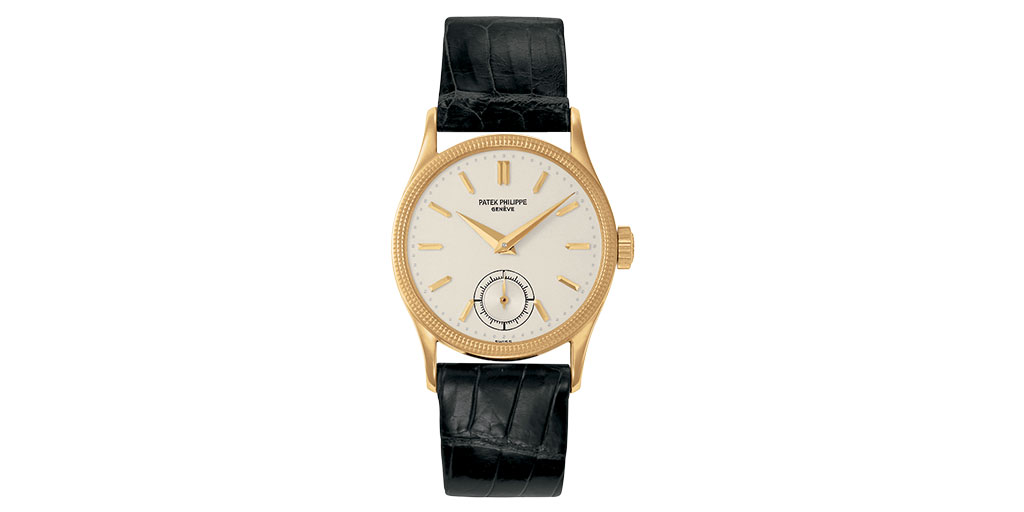
The literal translation of ‘Clous de Paris’ is ‘nails of Paris’, but the more palatable ‘hobnail’ has become the de facto translation in English. Under close inspection, the hobnail design consists of two concentric circles of small pyramid shapes. No doubt this pyramid shape was originally based on the point of a nail made in Paris. However, the double line of sharp-pointed, pyramid shapes reflects light three dimensionally, encircling the dial with beauty and depth.
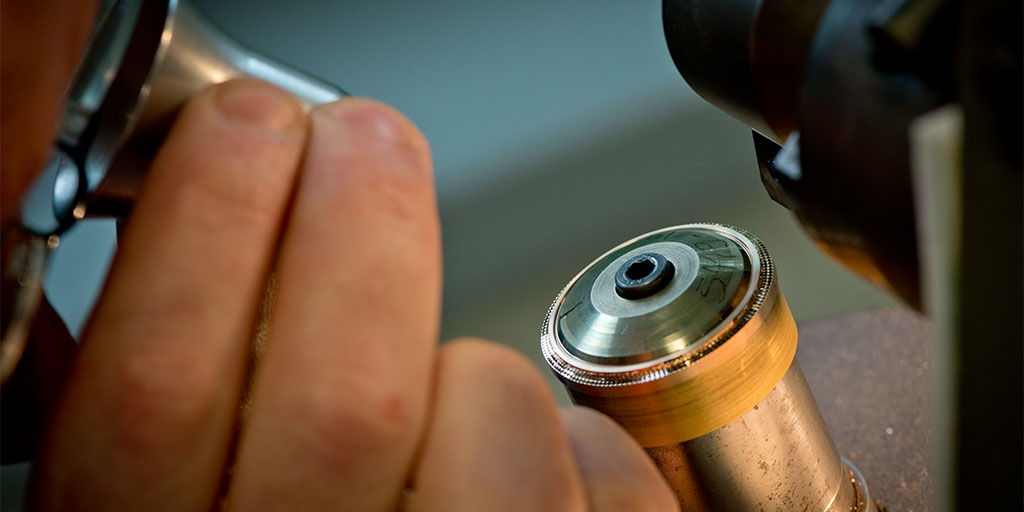
This decorative technique has been used to enhance the appearance of metal parts, especially watch dials and rotors since the 18th century. At Patek, decorating each bezel with the hobnail design is a form of guilloché engraving achieved by engine turning. In the past, one watchmaker, known as a guillochéur was solely responsible for engraving the distinct pattern on each bezel using an ancient machine which he guided by hand.

Ref. 3919, also known as the ‘bankers watch’ is the benchmark for a modern dress watch. For over twenty years it reigned supreme as the quintessential Patek Philippe wristwatch. It featured in advertising campaigns around the world, and the universally recognized ad image of two hands holding the watch for presentation became synonymous with the brand. Interestingly, the design of the ref. 3919 and its corresponding ad campaign were not as one would assume, the collaboration between the manufacture (design of watch) and the ad agency (design of ad campaign), but as legend has it, the ref. 3919 was the marketing brainchild of ad man René H. Bittel.
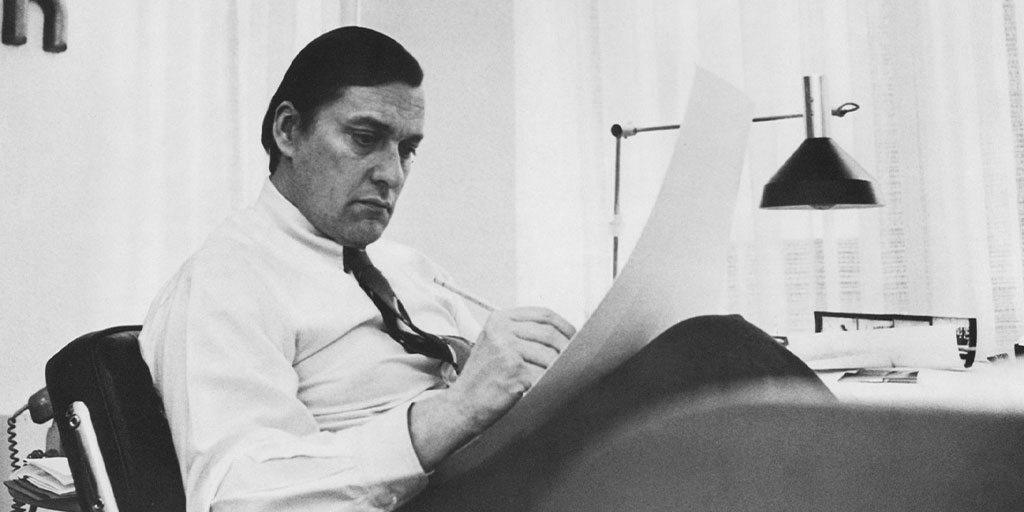
Bittel was the product of the golden days of advertising: the Mad Men era of a new age of marketing inspired by US agencies located on Madison Avenue in New York during the 1950s and 60s. Working internationally from his base in Geneva, Bittel was a talented art director and graphic designer who created an impressive portfolio of advertising campaigns for a wide range of industries. In 1984, René Bittel acquired the Geneva branch of the international agency, Kenyon & Eckhardt which gave him the network he needed to conduct global campaigns for Swiss clients. It was at this time that Patek Philippe came to him for marketing help.
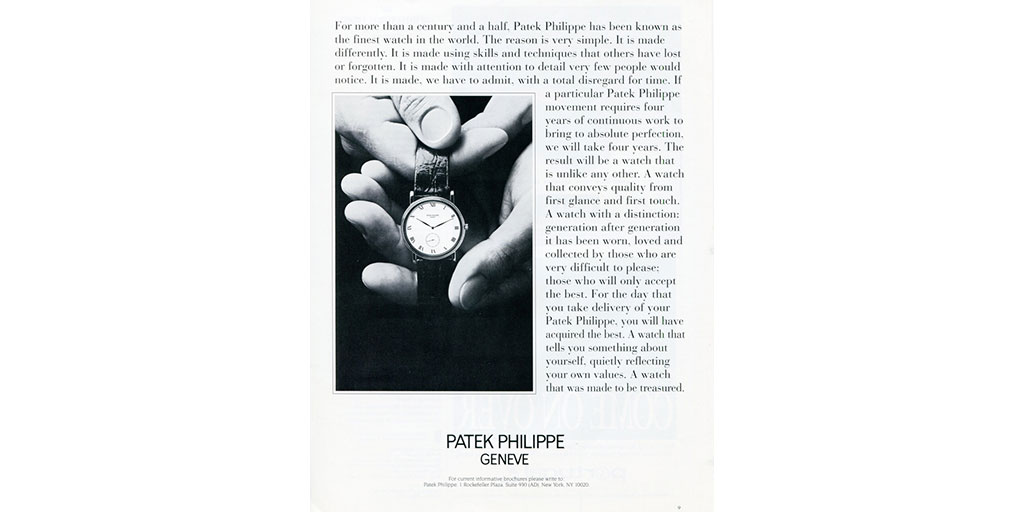
In the early 1980s, Patek Philippe was still reeling from the trauma of the quartz revolution. Production had fallen to barely 5000 pieces a year, well below the height of the watch boom in the 1960s. Under the brilliant guidance of Philippe Stern, who doggedly stood by his belief that manual timepieces had a future, the company realized that it could no longer depend on a small, client base of privileged people who quietly knew the brand; it had to build awareness and a new global market for its exceptional watches. Plus, he was not alone, Jean-Claude Biver was resurrecting the then out-of-business Blancpain, using the marketing line that it had “never made a quartz watch since 1753, and never would”. Philippe Stern was aware of Bittel’s advertising skills and asked him to help solve the company’s current dilemma. The story goes that the first suggestion Bittel made was that Patek Philippe needed a recognizable watch that people around the world could identify as the world’s finest watch. Most people knew what a Rolex or Cartier looked like but could not spot a Patek. Philippe Stern asked Bittel to decide which watch best represented Patek from a marketing perspective and it was from this request, that René Bittel took a pen and paper and drew what was to become the ref. 3919 – the classic Patek Philippe.

The ingredients for the ref. 3919 contained the following: first the Calatrava, the quintessential Patek design. Second was the hobnail dial. This decoration was then being used on the manual ref. 3520D (introduced in 1972 with a 32 mm dial) and the ref. 3802 (introduced in 1983 with an automatic movement with date and center seconds, which in 1986 became ref. 3802-200). Bittel however, made sure that the hobnail decoration really stood out by contrasting it with a crisp white dial, that channeled the beauty of an enamel dial but without the worry of breaking, and sharp, black Roman numerals. This combination, together with clever ad copy was the recipe for success. The ref. 3919 was launched in 1985 with a 33.5 mm case and a mere thickness of 6.5 mm. Also new to the model was the caliber 215 PS movement which added a sub-second at 6 o’clock. The hands although black, were made of white gold and then black nickel-plated.
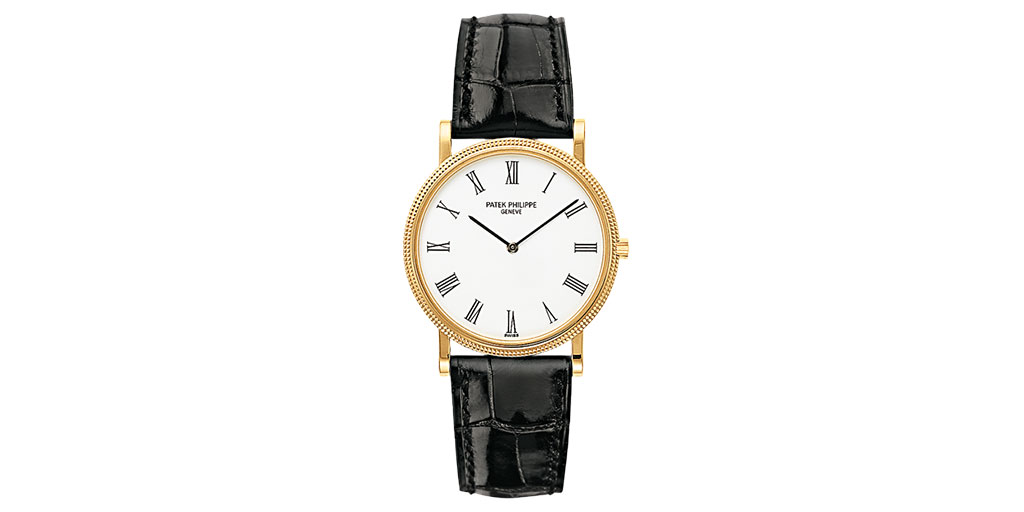
It did not take long for the ref. 3919 to become the face of Patek. Bittel realized that the newly rich of the 1980s – the high spending, status seeking yuppies – traveled a lot and brought luxury items when they traveled. The black and white ad featuring Bittel’s own hands presenting the watch with its enticing copy, followed them through airports, hotels in magazines, newspapers, and billboards. This was Patek’s first international ad campaign, and it worked. Within two years Patek’s sales increased 28% and the number of watches sold (including quartz) reached over 12,000 in 1987. By the early 1990s, Patek could not keep up with demand and René Bittel had to produce ads explaining why customers had to wait so long.
Patek’s relationship with Bittel’s agency, now known internationally as Bozell, ended in 1996 when the author of this article suggested to Philippe Stern that a new ad campaign was needed and the Generations campaign, “You never actually own a Patek, you merely look after it for the next generation” was born. René Bittel achieved extraordinary success in not only turning around the fortunes of Patek Philippe but by creating a watch that remain today, timeless, and iconic.
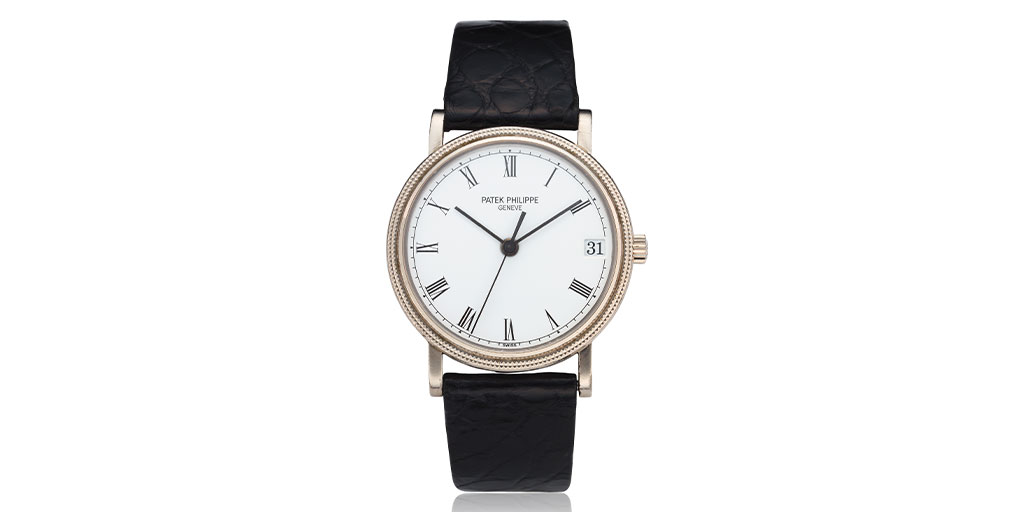
The ref. 3919 stayed in production for two decades until 2006 when it was replaced by the larger 36 mm ref. 5119. During this time, several different versions featuring the hobnail dial and numerous dial variations and bracelets were also introduced. In 1988, the self-winding ref. 3992 with its clean, white dial and black roman numerals was launched. The classic, self-winding 3802/200 series was fitted with a date corrector and the caliber 310 SC in 1990, and later (from 1992) with caliber 315. It stayed in the collection until 2006, and like the ref. 3919, it became a staple of the Patek collection. The cases for the ref. 3802/200 were made by master case maker Favre-Perret in La Chaux-de-fonds.
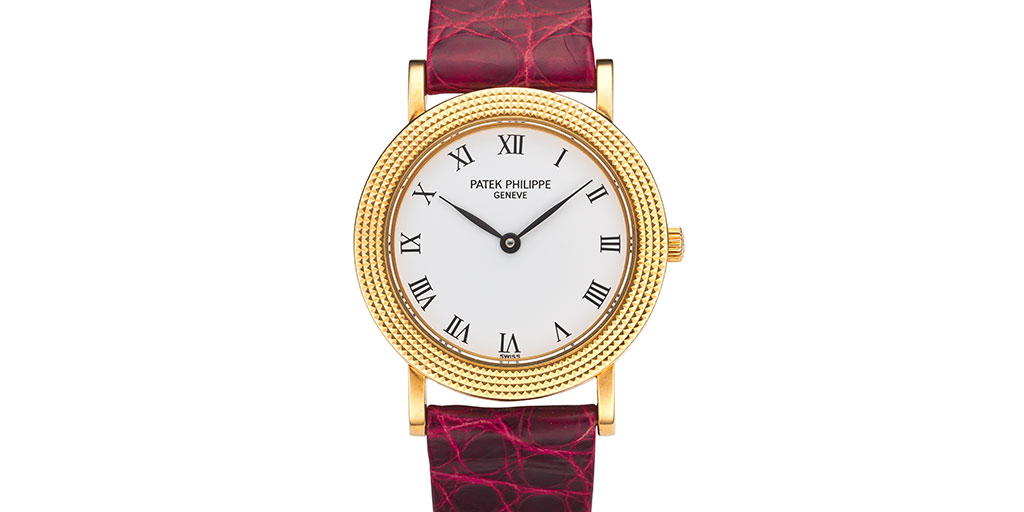
The ladies also had their choice of this iconic model, first with the ref. 4819 in 1987 which featured the quartz E 15 movement. A manual wind version, ref. 4809 was introduced in 1991 with a caliber 16-250 movement. It stayed in the collection until 2002 and like its quartz sister, it had a 25 mm case. Another new addition in the early 1990s was the ref. 4919 which took the hobnail decoration to an exciting new look with four distinctive rows, rather than the traditional two.
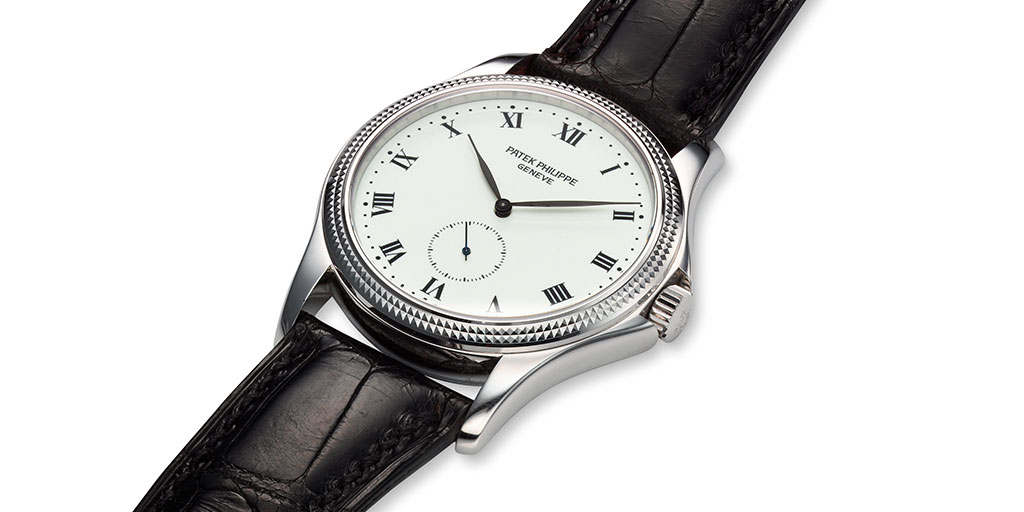
With the new millennium, a new look was introduced featuring a hobnail bezel: the manual ref. 5115 with an enamel dial. This reference was relatively misunderstood when it launched in 2000, in part because the new, rounded case was a departure from the previous, classic hobnail Calatravas. But what truly differentiated it was the baked enamel dial that gave each piece a unique, vintage appeal not seen since the ref. 2526. Featuring the caliber 215 PS and a 35.5 mm case, this reference is the ultimate sleeper from the modern era.
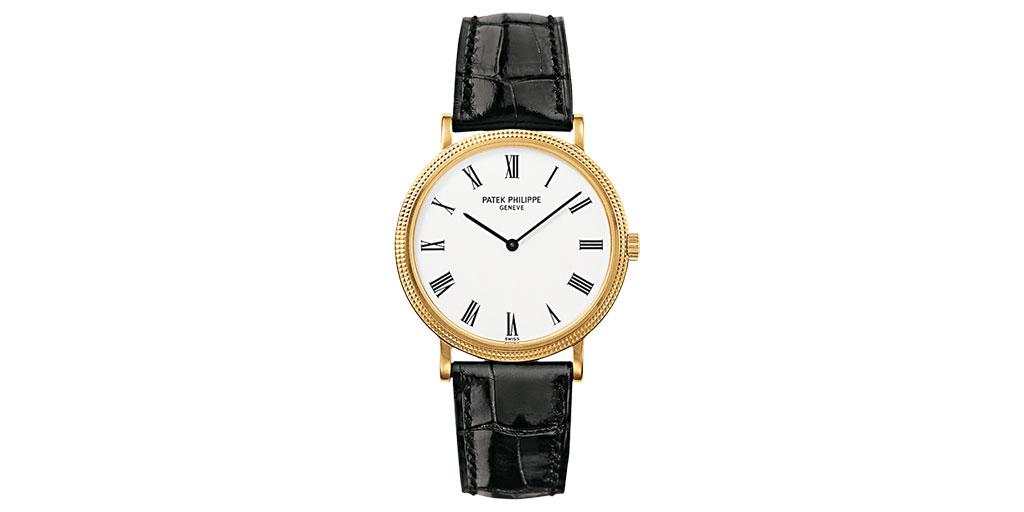
In 2001, Patek got back to basics with ref. 5120, fundamentally, a larger, 35 mm case, replacing the ref. 3992 with an ultra-thin self-winding caliber 240 and a sapphire crystal back.
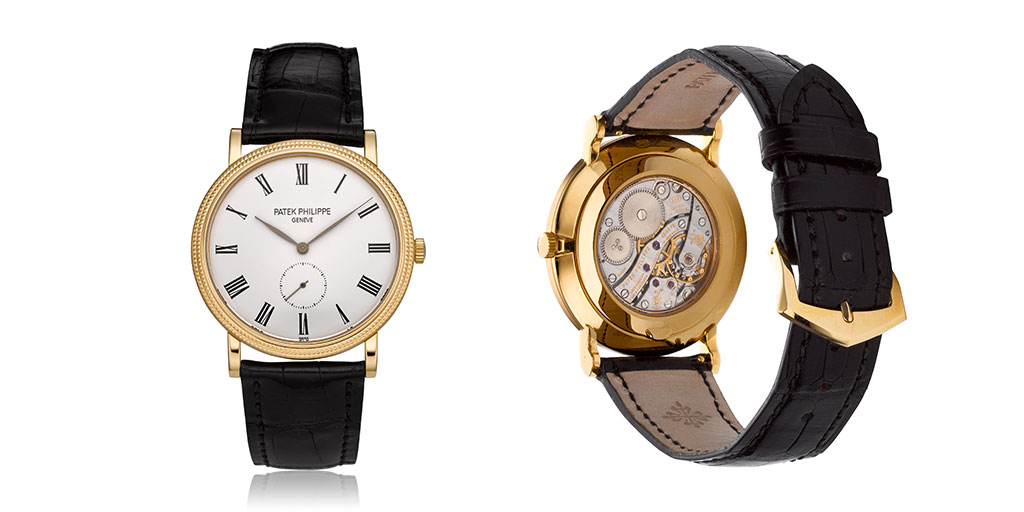
In 2006, the iconic ref. 3919 came to an official end and was replaced by the ref. 5119, still with its handsome, timeless, looks but a larger 36 mm dial. The ref. 5119 held its position as the classic Patek, time-only Calatrava until 2021 when Patek Philippe introduced the ref. 6119 in rose and white gold with a 39 mm case and a new movement, caliber 30-255 PS magnificently presented through the large crystal back.
The introduction of the ref. 6119 solidifies Patek Philippe’s respect for the Clous de Paris, guilloché hobnail design for its Calatrava collection and most importantly, the ref. 3919. Certain sports watches may come and go in a frenzy, but nothing will replace the classic hobnail Calatrava. To quote a 1980s ad tagline by René Bittel for his genius ref. 3919 design: “A Patek Philippe does not just tell you the time, it tells you something about yourself.”


